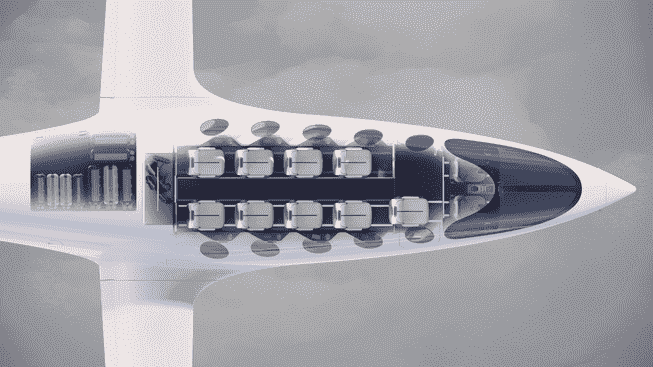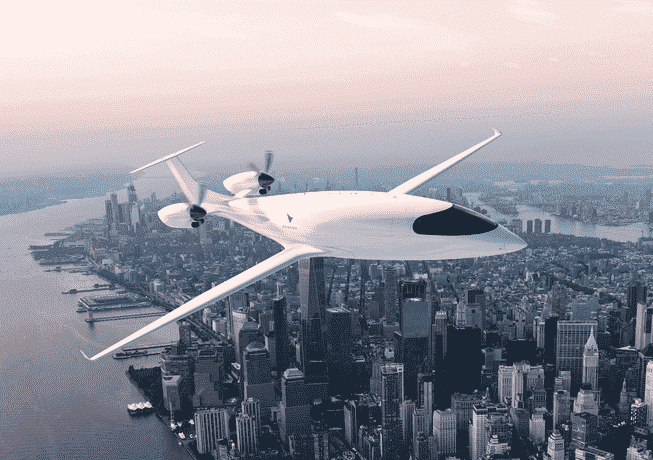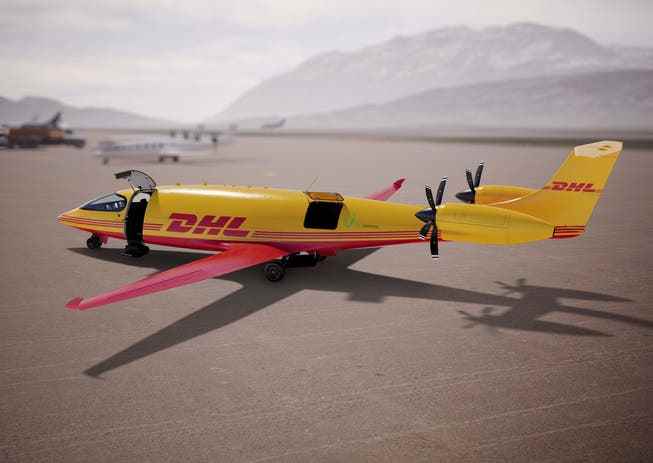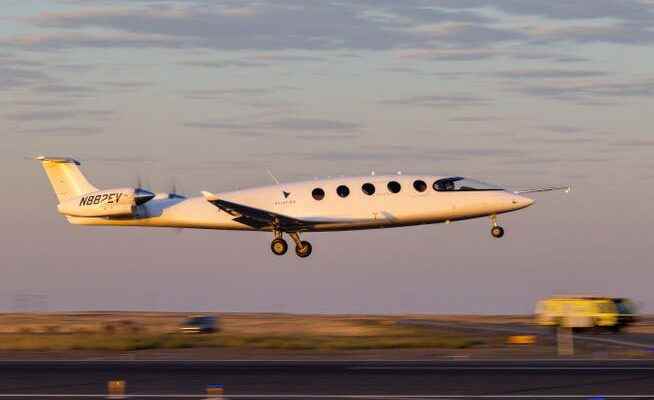It is the starting signal for commercial aviation with electricity: In the USA, the prototype of a small commercial aircraft with an electric drive took off for the first time on Tuesday.
After the successful first flight of the Alice, Eviation now has to take care of the aviation certification of the electric airliner.
The successful maiden flight of the Alice twin-engine electric airliner on Tuesday at Moses Lake Airfield in the US state of Washington is a milestone. Because now the American-Israeli company Eviation Aircraft can start with the flight testing of its new regional airliner.
According to the manufacturer, Alice should cover a distance of around 800 kilometers at a cruising speed of up to 450 km/h. This is sufficient for short distances, and Alice shouldn’t fly any further. The variant as a regional aircraft has space for nine passengers and two pilots. There will also be a cargo version.
Eviation Aircraft is still keeping a low profile on many details. How high the service ceiling of the pressurized cabin machine will be is just as unknown as the type, performance, service life or manufacturer of the batteries used. So far, the manufacturer has also kept to itself what the charging infrastructure should look like.

Two propellers are enough for electric thrust.

Alice can accommodate up to nine passengers.
Light as a pickup truck
When it comes to the drive, on the other hand, there is more openness. Two 640-kilowatt Magni650 electric motors from the US company MagniX are used. They drive specially tuned propellers. Unlike other electric flight companies, which simply put an electric motor instead of the combustion engine in a proven airframe, Eviation designed its aircraft from the start to be electric.
That’s why the machine, with a wingspan of around 19 meters and a length of 17.4 meters, is specially designed for excellent aerodynamics. In addition, the outer skin of the aircraft, which weighs a maximum of 7.5 tons and is made of fiber composite materials, is designed in such a way that the batteries in the fuselage can be cooled by the airstream.
However, the development of the machine was marked by obstacles: As early as 2019, a prototype was presented at the Paris Air Show in the same year with full-bodied promises about a possible first flight. That made experts shudder. A three-engine aircraft, equipped with two electric motors in the wing tips and pusher propellers and one electric motor in the tail, all in a tailwheel configuration that is unusual for commercial aircraft – this caused great skepticism in the industry.
In 2021, Eviation Aircraft then presented the now realized, much more conventional design with two propeller engines in the rear, like a business jet, with the usual tricycle landing gear. There was also some turbulence behind the scenes: the co-founder and CEO of Eviation Aircraft surprisingly resigned in February this year.
Charging infrastructure is still missing
In the future, Alice’s reliability, operating costs, flexibility of use and safety will be decisive for its commercial success. After all, an airliner only earns money when it’s in the air. Long standing times on the ground to charge the batteries should therefore be avoided. In addition, an infrastructure must be created. Charging stations at airports are still the exception in the USA, as in Switzerland.
If Alice is to be a success, an infrastructure for charging the batteries at all airfields where the machine is used must be created parallel to the flight tests. In the case of aircraft with internal combustion engines, this logistics already exists in the form of filling stations for kerosene or the piston engine fuel avgas. In addition, the operating costs per electric flight hour should be similar to or lower than that of a conventional regional aircraft with a piston engine or turboprop.

With the cargo version, there is no need for side windows.
An important advantage: Alice is significantly quieter than an aircraft with a combustion engine, both for passengers and those living near the airport. This saves landing fees and makes use in noise-sensitive areas or at night possible in the first place. If electricity for charging is generated from renewable energies, Alice will probably fly almost free of CO2-emission. On the planned short routes, the machine could probably be competitive with conventional twin-engine ones. But that only applies if the recent sharp rise in electricity prices doesn’t put a spanner in the works for the aircraft manufacturer.
Approval may be difficult
However, the aviation approval as an electric aircraft by the US aviation authority FAA and later by the European Aviation Safety Agency EASA is unlikely to work before 2025. It is also significantly more complex than with conventional aircraft. Because Alice embodies new technical territory in many areas. For example, when it comes to the question of how reliable and fail-safe electric motors are. Or from which number of charging cycles the batteries have to be replaced.
In addition, how fire-protected are the energy storage devices during the flight? And how do you extinguish an electrically powered commercial aircraft in an emergency? An incident at Eviation Aircraft shows that this point should not be underestimated: the first prototype burned down during tests in the hangar last year.
Eviation Aircraft advertises that the German Post subsidiary DHL Express has already given order options for twelve copies of the Alice freight version with a payload of around 1200 kilograms in 2021. In the spring of this year, the US regional airline Cape Air even announced that it intends to buy 75 aircraft.
However, this should not be overestimated. Because manufacturers like to announce possible incoming orders during the flight test for publicity reasons. In fact, they are no more than declarations of intent. A real order is only ever placed when all the technical data of the aircraft are known and, above all, the aviation approval is actually available.

According to Eviation, Deutsche Post has already ordered twelve machines for its parcel service DHL.
With its successful maiden flight, the American-Israeli aircraft manufacturer has now achieved an important partial success on its way to starting scheduled flight operations with the first electric regional airliner in the future.
